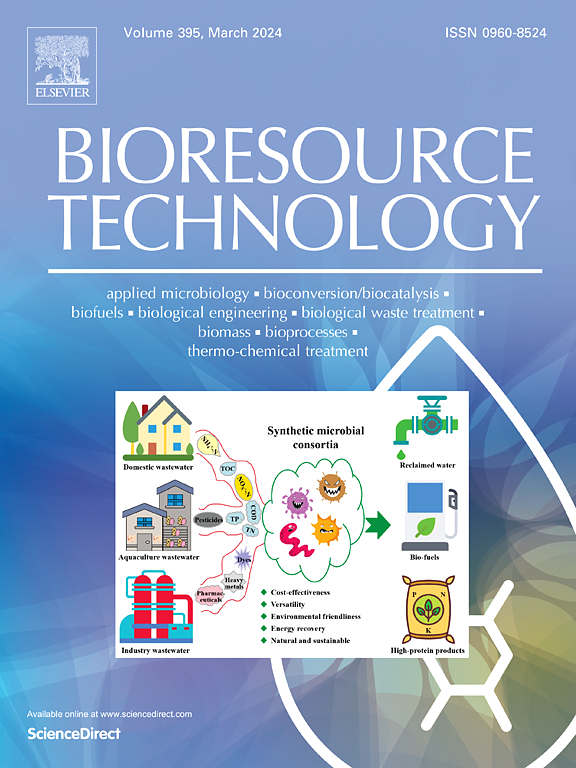Impact of indigenous vs. cultivated microalgae strains on biomass accumulation, microbial community composition, and nutrient removal in algae-based dairy wastewater treatment
IF 9.7
1区 环境科学与生态学
Q1 AGRICULTURAL ENGINEERING
引用次数: 0
Abstract
This study investigated the role of indigenous and cultivated microalgae in nutrient removal and biomass production in dairy wastewater, especially in microbial function change. Five indigenous and three cultured microalgal strains were grown in sterile and non-sterile dairy wastewater, and nutrient removal and biomass profiles were analysed. Results showed higher phosphorus removal (90.1 % vs. 81.8 %, p < 0.001) and biomass production (2.3 vs. 2.0 g/L, p < 0.001) in sterile wastewater, while nitrogen removal was higher in non-sterile wastewater (83.1 % vs. 77.5 %, p < 0.05). Indigenous strains grew more consistently in high-concentration wastewater, though not significantly different from cultured strains. Phycosphere bacteria communities were more closely associated with total nitrogen, total phosphorus, and pigment content, while free-living bacteria primarily dependent on chlorophyll a and extracellular polymeric substances (EPS). The nitrogen transforming function was enhanced in phycosphere. These findings provide insights for optimizing microalgal-based wastewater treatment, advancing sustainable dairy wastewater management.

求助全文
约1分钟内获得全文
求助全文
来源期刊

Bioresource Technology
工程技术-能源与燃料
CiteScore
20.80
自引率
19.30%
发文量
2013
审稿时长
12 days
期刊介绍:
Bioresource Technology publishes original articles, review articles, case studies, and short communications covering the fundamentals, applications, and management of bioresource technology. The journal seeks to advance and disseminate knowledge across various areas related to biomass, biological waste treatment, bioenergy, biotransformations, bioresource systems analysis, and associated conversion or production technologies.
Topics include:
• Biofuels: liquid and gaseous biofuels production, modeling and economics
• Bioprocesses and bioproducts: biocatalysis and fermentations
• Biomass and feedstocks utilization: bioconversion of agro-industrial residues
• Environmental protection: biological waste treatment
• Thermochemical conversion of biomass: combustion, pyrolysis, gasification, catalysis.
 求助内容:
求助内容: 应助结果提醒方式:
应助结果提醒方式:


